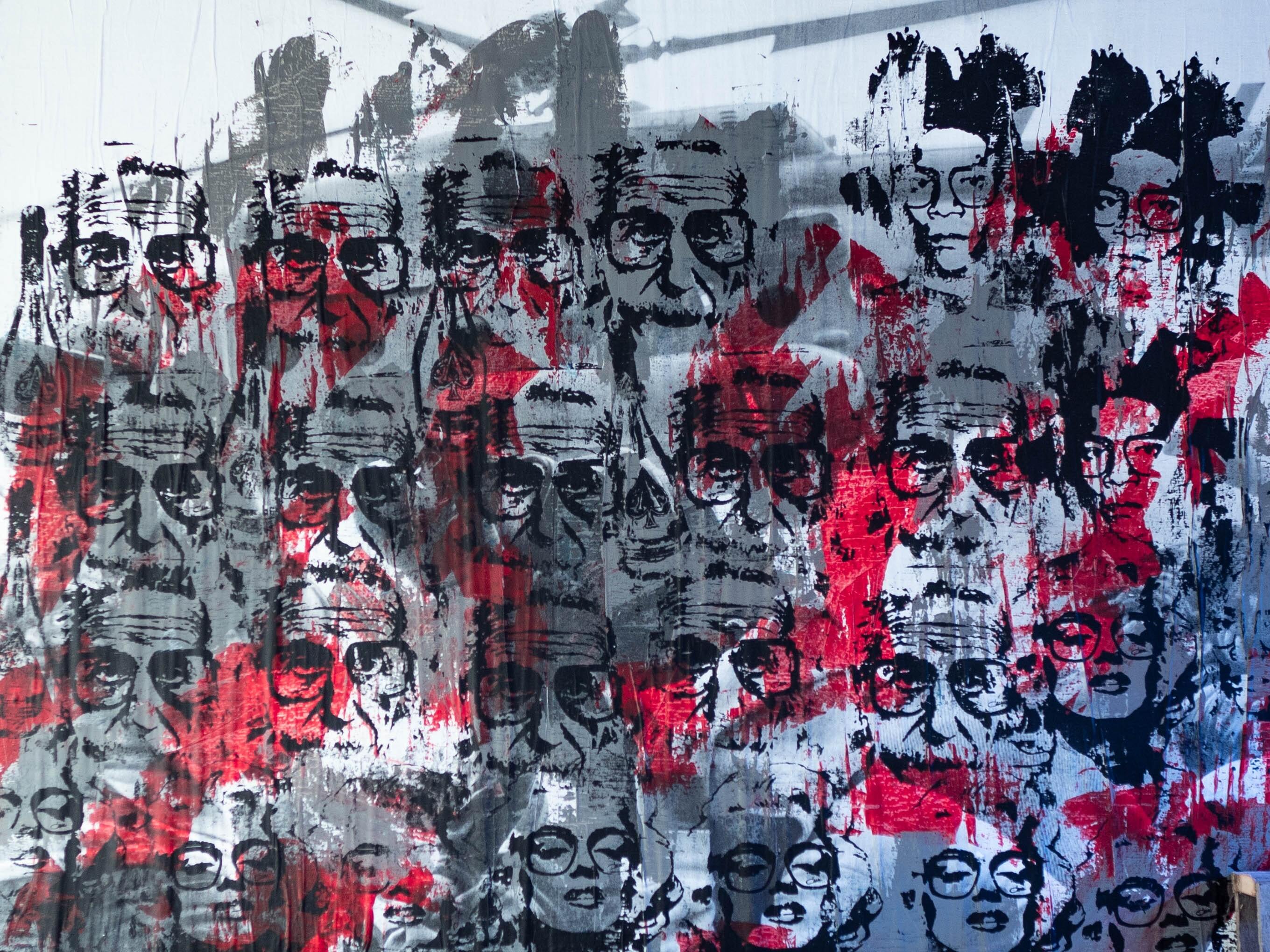What do you think of when you think of an artist? Odds are that, at least for a moment, the old media construct of an emotionally-tortured or financially-destitute individual flashed in your mind. Someone who, in a substance-induced mania, splashes paints on a canvas or frantically plays chords on a guitar sprang to mind. After envisioning that whirlwind of creativity, you may have imagined the artist sinking in an ever-deepening spiral of dark depression that will inevitably end in tragedy.
Despite that image, the latest research is signposting innovation, creativity, and non-binary critical thinking — the very essence of an artist — as essential 21st-century leadership skills.
The question is; why are so many of us stuck in an old paradigm of thinking, of believing that creativity and critical thinking as mutually exclusive? The reason that some people see creativity and critical thinking as being opposed is because creativity, as least for ordinary people, has been shamed since the Industrial Revolution.
Throughout the industrial age trampling down creativity was the most potent way to get people to do what industry wanted them to do. Artists (in any form) were relegated to a lower moral position in society because if a person who was open-minded and tapped into their creativity, there was a pretty good chance that they would think outside the box, maybe even break some rules, and interfere with the “production line.”
I put it to you that almost everyone who is genuinely successful (in the sincerest sense of the word) is anything but a suffering artist. These are the artists we fail to notice because they are often disguised as entrepreneurs, leaders, scientists, mathematicians, chefs, teachers, athletes, and a whole host of other things.
In a 1968 essay, Maslow said “creativeness” is a facet of self-actualization. What I love about this essay was that Maslow breaks with the tradition of defining creativity in terms of its products. In fact, Maslow’s hierarchy places creativity in the highest category of self-actualization. Yet many still assume that creativity is the process that results in something unique. That’s not what Maslow meant. He says there’s a correlation between psychological health and what he calls “ordinary creativity.” In fact, Maslow defines creativity in characteristic terms, with cheerfulness and openness to new experience being part of the mix. To Maslow, creative people are like happy and secure children. He goes on to say that creative people see “the fresh, the raw, the concrete, the idiographic, they do not cling to the familiar, nor is their quest for the truth a catastrophic need for certainty, safety, definiteness, and order.” Here’s what’s fascinating: Maslow saw society’s rigidity and repression of creativity as the great inhibitor, alienating the individual from themselves.
So, let me ask a “creative” question:
What if, every day when you went to work, you saw yourself as an artist? What if your work, no matter what kind of work you do, was to become the medium through which you get to create your masterpiece?
Before you answer, let’s look at another great thinker on the subject. The most-watched TED Talk of all time (so far) was by Sir Ken Robinson. Sir Ken said that schools, in fact, rather than supporting creativity, undermine it. He went on to say: “I believe now that creativity is as important as literacy. And it should be treated with the same status.” Sir Ken defines creativity as “the process of having original ideas that have value.” In that, it differs from imagination, which is the ability to bring to mind things that aren’t present to your senses. “I think of creativity as putting your imagination to work.”
“If you are not prepared to be wrong, you’ll never do anything original.”
Sir Ken Robinson
So, what’s all this got to do with creating a fast track to keeping your people inspired?
The answer is simple:Everything!
Here’s why. Today more than ever, we’re all having to face the fact that if we are not agile as industries, as businesses, as leaders or even employees, it won’t be long before it’s Game Over! That agility doesn’t come from critical thinking. It comes from being able to innovate, and innovation is, at its source, creativity.
Even before the massive economic disruption of the 2020 pandemic, the evidence was there. According to the McKinsey Global Survey, 80% of executives thought that their current business models are at risk of being disrupted in the near future. In addition, 84% of executives say that innovation is important to their growth strategy. Even back in 2010, McKinsey revealed that only 4% of executives have not defined innovation as a strategic priority and had no plans to do so in the future. The Accenture 2015 US Innovation Survey tells a similar story: 84% of executives considered their future success to be very or extremely dependent on innovation.
So how can having artists on your team benefit you? You are undoubtedly aware that each member of your team has some kind of a specialty and as great as that might be, it also sets up a challenge: it means that each member of the team is seeing things through their own lenses and those lenses become unconscious biases. For example, a typical engineer will think in terms of systems. “Systems” are their lenses, their unconscious bias. A psychologist might think in terms of incentives or behavioral patterns; those are their lenses or biases. A biologist might think in terms of evolution, etc.
It can be hard for someone to get through their own biases and see through another set of lenses. However, the artist or creative thinker might put all three of these disciplines together in their mind and confront the challenge in a more multidimensional manner. That is why, as a leader, you must encourage creativity, since if we look at the problem only one way, we’re playing into our own blind spots.
Let me put it bluntly: If you and I want to be better leaders, we must facilitate and nurture the creativity of every member of our team. Still not convinced? Here’s a simple and applicable creativity tool you can use right now to shift your mind into a more creative mode. Think about a challenge you are facing (it doesn’t matter what it is). Just for argument, let’s say you have got to cut the cost of running your organization by 20% while becoming 10% more efficient.
How are you going to do that? You are most likely to go to (as do we all) to your most natural problem-solving process. (Think about the examples above of engineer, psychologist, and biologist.) To escape the mental box, you unavoidably would find yourself in, imagine yourself in a new way. If you were a choreographer, how would you look at this problem if you saw it as a dance? How would a cab driver see it? What about a tailor? How about a jockey? The reality is that there are innumerable creative ways to solve any challenge. One thing that I can guarantee is that you keep doing what you’ve always done, using the strategies you’ve always used… well, you know the rest.
When you choose to embrace your creativity, you not only find new ways to operate, you will find yourself fast-tracking the creativity in the members of your team. And when you keep your people uniquely inspired, you and your entire organization will be on the fast-track to implementing the essential skills of innovation and non-binary critical thinking that will allow you to become an agile organization that can survive anything that comes your way.
So, let me ask again:
What if, every day that you went to work, you saw yourself as an artist?
What if your work were to become the medium through which you get to create your masterpiece?
What if you fully embraced your creativity and the creativity of everyone on your team?
Dov Baron is first and foremost “The Dragonist”. As The Dragonist, he teaches us how to recognize, find, retain and nurture dragons (top talent) hidden within our organizations.
Want to learn more about what Dov has to offer, and how you too can become a Dragonist in your realm? If you and your leadership team are dedicated to getting the result you set out to achieve in the most meaningful manner, bring Dov in to speak to your organization about the strategic advantages of Dragon Leadership. Go here to get started.
Copyright: Dov Baron International 2020
With gratitude,
Dov Baron…


